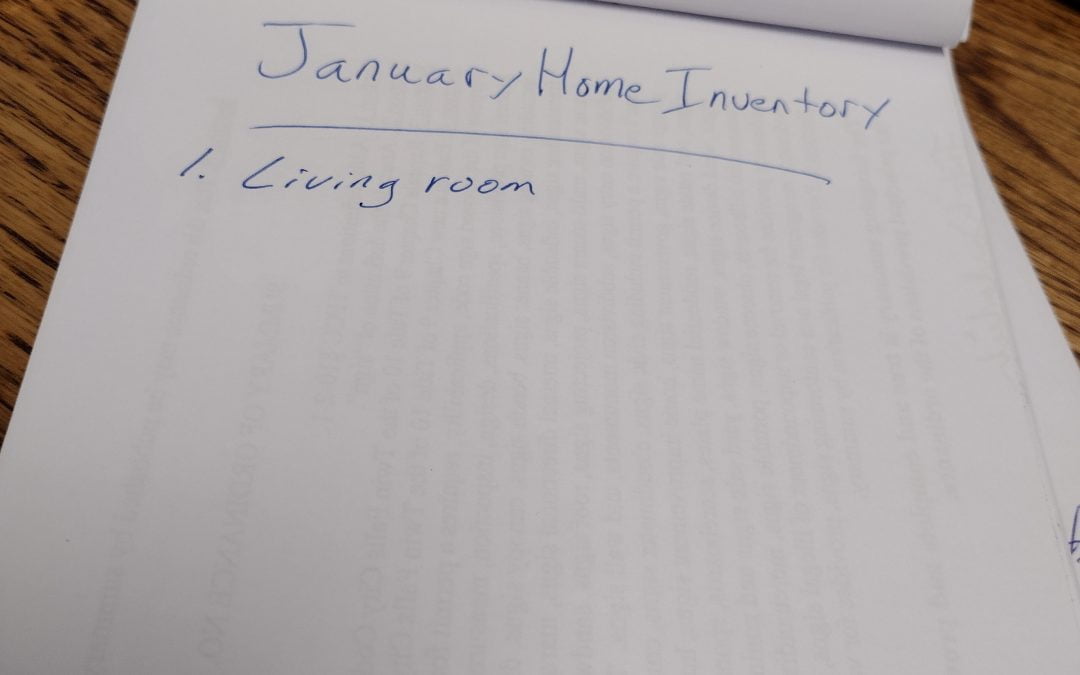Did You Know?
Home Inventory.
January is an ideal time to create a home inventory of your property. You’ve just had gifts from the holidays come in and you’ll want to get those new items cataloged. If you are planning to list your home for sale in early spring, it is even a better time. Do a deep clean, make repairs and while doing that, create a visual inventory of your home and belongings. Your insurance company will love it and you can feel secure in the fact that if a fire, natural disaster, or a break-in should occur you have the documented proof of your assets.
A smart phone is all the equipment you need. Start on the outside and methodically move through your property cleaning, purging, and recording as you go.
Exterior videos and pictures.
It’s important to start your home inventory by capturing the exterior of your home, including any outbuildings or sheds. Video the exterior condition of your home along with landscaping and any outside buildings. Zero in on grills, lawn furniture, exterior lighting with still photos. This can be done with video or still photography, or a combination of both. Wide shots of the front and back of the house, as well as any side views, can help provide context for the rest of the inventory. Be sure to also include any unique features or details, such as a distinctive front door or a decorative fence.
The Garage.
Next, move on to the garage and any other outbuildings. Start by moving items one at a time to the driveway where you can photograph and get some good light. Zero in on bikes, snowblowers, and tool boxes. Be sure to capture the inside and outside of these structures, and include any items that are stored inside, such as tools, gardening equipment, or sports equipment. It’s a good idea to group similar items together, such as all the hand tools in one location and all the power tools in another. This can help make it easier to identify and count each item.
Interior of Each Room.
Once you have completed the exterior and garage, move on to the interior of your home. Start with the main living areas and work your way through each room, including the kitchen, bathrooms, bedrooms, and any other spaces. As you go through each room, be sure to include details such as the layout, furnishings, and any special features. For example, if you have a fireplace in the living room, be sure to include a picture of it and any items that are stored nearby, such as firewood or a fireplace screen.
Individual Items.
As you inventory each room, take the time to document individual items that have value or sentimental importance. This can include items such as artwork, collectibles, family heirlooms, or electronics. Electronics should show the brand and model, as well as and serial numbers. Be sure to include a detailed description of each item, as well as any relevant information such as the make and model, age, or any distinguishing features.
When to Use Wide Shots.
Wide shots can be useful for capturing the overall layout and design of a room, but it’s important to also include close-up shots of individual items. This can help provide more detailed documentation and make it easier to identify specific items in the event of a loss. Bring out designer or especially valuable pieces and photograph them individually on a table or bed, or hand them on the door.
How to Make Copies of the Inventory.
Once you have completed your home inventory, it’s important to make copies and store them in a safe location. This can include keeping a physical copy in a secure location, such as a fireproof safe or a bank safe deposit box, as well as storing a digital copy in a secure online location, such as a cloud storage service. It’s also a good idea to share the inventory with a trusted friend or family member, just in case something happens to your copies. This way, you will have a backup available in the event of a loss or emergency.
